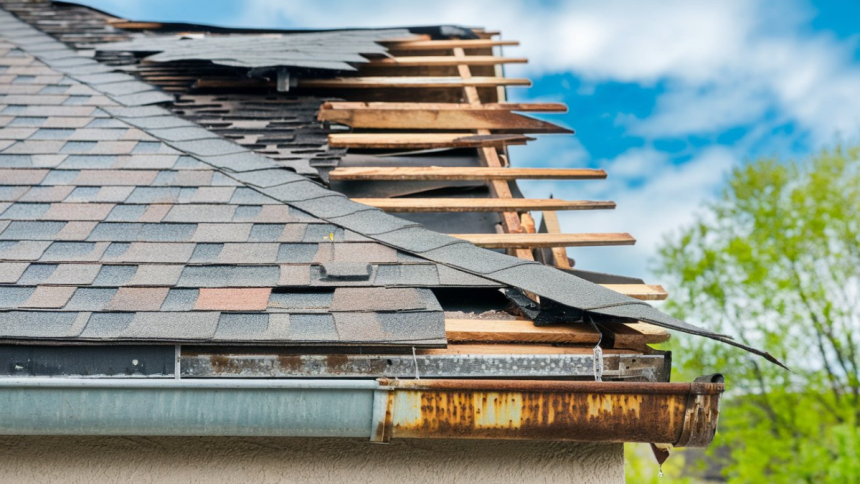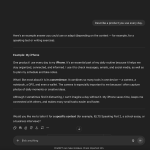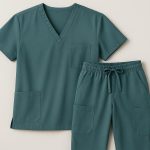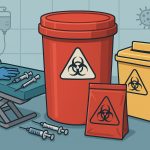When people think about building maintenance, the roof isn’t usually the first thing that comes to mind. But it should be—especially for businesses. A commercial roof isn’t just a cover over a building. It protects everything inside, from equipment and supplies to employees and customers. If something goes wrong with it, the whole business can be affected.
Roofs don’t always show obvious signs when there’s a problem. But if you know what to look for early on, you can stop small issues from turning into big ones. And that can save a lot of time, stress, and money.
Why You Can’t Wait to Check a Commercial Roof
A commercial roof might look strong on the outside, but problems can build up underneath. Leaks, cracks, and weak spots don’t always show until it’s too late. If water starts getting in, it can damage walls, ceilings, and anything stored inside the building. On top of that, mold can grow, and that brings even more trouble.
That’s why smart business owners don’t wait for obvious damage. They keep an eye out for signs and call in professionals when something seems off. Even if the roof still “looks fine,” that doesn’t mean it actually is.
Getting regular checks from a commercial roofing company can help catch hidden problems early. These companies know what to look for and can make repairs before things get worse. Many issues aren’t visible from the ground, so it helps to have someone go up there who knows what they’re doing.
Signs a Commercial Roof Might Be in Trouble
Not every problem will be super obvious, but there are a few signs to watch for that usually mean something’s wrong:
1. Water stains inside the building
If there are spots on the ceiling or walls, there’s a good chance water is getting in from the roof.
2. Soft spots or sagging areas
Walking on a flat roof and noticing a spongy feel or dip? That can mean water is trapped inside the roof layers.
3. Standing water after it rains
Flat roofs are designed to drain, so if puddles stick around for more than a day or two, it could be a problem with the drainage system—or a sign of sinking areas.
4. Cracks or gaps near roof edges
Look near seams, edges, or anywhere different materials connect. If there are visible cracks or lifting edges, water can sneak in through those spots.
5. Higher energy bills
Sometimes, damage to a roof’s insulation lets hot or cold air escape, which can drive up heating and cooling costs. If bills suddenly go up, the roof might be the reason.
The Problem With Waiting Too Long
Putting off roof maintenance is risky. What starts as a small leak can spread quickly. Water might run down walls, short out electrical systems, or ruin insulation. Once mold sets in, cleanup becomes harder and more expensive. In some cases, businesses have to shut down parts of their building—or even close completely—just to fix the damage.
Fixing a small section of a roof or sealing a crack is a lot cheaper than replacing the whole thing. That’s why taking action early is a smart move.
Not All Roofing Companies Are the Same
Just calling someone isn’t enough. You want to make sure the roofing company really understands commercial roofs. They’re different from houses—they’re flatter, often larger, and built with materials that work best for business use. An experienced team will know how to check everything, from waterproof layers to drainage systems.
The best time to get a roof checked is before something goes wrong. Spring and fall are usually good times because the weather is milder. But if there’s been a heavy storm, strong winds, or extreme heat, it’s worth getting a roof inspection sooner.
What a Roof Inspection Usually Includes
A proper inspection covers the whole roof, not just one area. Here’s what usually happens:
- A roofer walks the entire roof, checking for damage or weak spots
- They look at drains, vents, seams, and flashing (the parts that seal edges and joints)
- They check for signs of mold, leaks, or rot
- They might take photos or write a report showing what they found
- If repairs are needed, they’ll explain what has to be done and how urgent it is
Sometimes it’s just a simple fix. Other times, they might recommend a full repair plan. Either way, knowing the problem is better than being surprised later.
A Roof That Works Means Less Stress
When a commercial roof is solid, everything below it works better. The building stays dry, the air stays clean, and people can do their jobs without worrying about leaks or weird smells from water damage. It also helps protect expensive gear, computers, furniture, and supplies that would cost a lot to replace.
Plus, a healthy roof helps with energy efficiency. When insulation is solid and no air escapes, heating and cooling systems don’t have to work as hard. That means lower bills and more comfortable rooms.
How Often Should a Commercial Roof Be Checked?
At least once a year is a good rule. Twice a year is even better, especially in areas with hurricanes, heavy storms, or high heat. Businesses with older roofs should be extra careful, since materials break down over time and need more attention.
If the roof has already had problems in the past, checking it more often can help make sure they don’t come back.
What to Remember
A roof might not be something people see every day, but it plays a huge role in keeping a business safe. Catching problems early makes repairs easier, cheaper, and way less stressful. Waiting too long only leads to bigger bills and bigger headaches.
For businesses that want to stay open, safe, and dry, taking care of the roof is just part of the plan. And it all starts with knowing what to look for.
Lynn Martelli is an editor at Readability. She received her MFA in Creative Writing from Antioch University and has worked as an editor for over 10 years. Lynn has edited a wide variety of books, including fiction, non-fiction, memoirs, and more. In her free time, Lynn enjoys reading, writing, and spending time with her family and friends.















